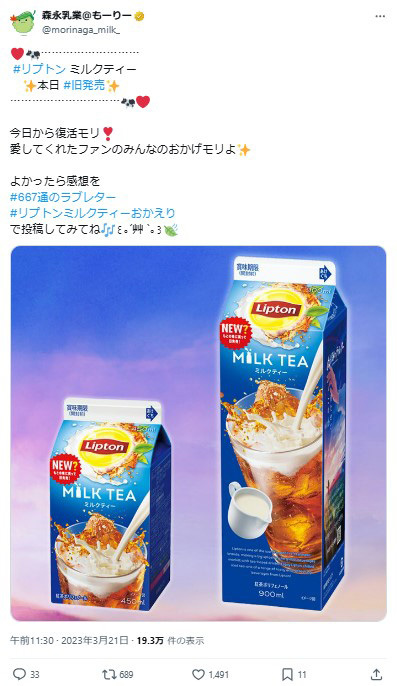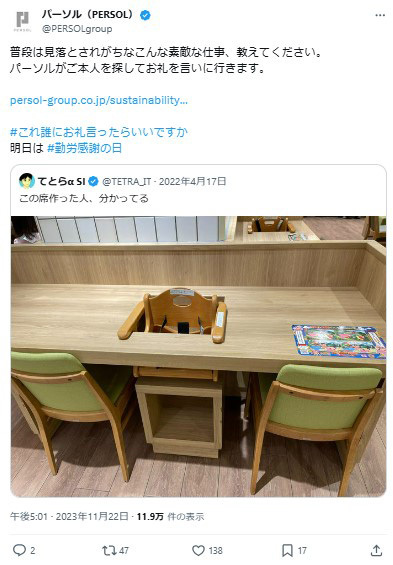Note: This website was automatically translated, so some terms or nuances may not be completely accurate.
What is a hashtag-based campaign?

Wataru Miyahara
X Corp. Japan Co., Ltd.

Nakagawa Kenta
Dentsu Inc.

X (formerly Twitter) has become indispensable for brand marketing and advertising campaigns. This series introduces the "4X" CX planning steps developed by X's creative strategy group "Next" and Dentsu Inc. through research on over 100 advertising campaigns ( see here for an overview of 4X).
This installment focuses on "Step 2: eXecute." We'll look back at the history of hashtags, explain their value in advertising campaigns, and introduce case studies of effective hashtag development.
Hashtags have the power to spark new conversations
The first hashtag used on X is said to have originated in August 2007, when a person named Chris Messina called for adding "#" to posts about a Barcamp event.
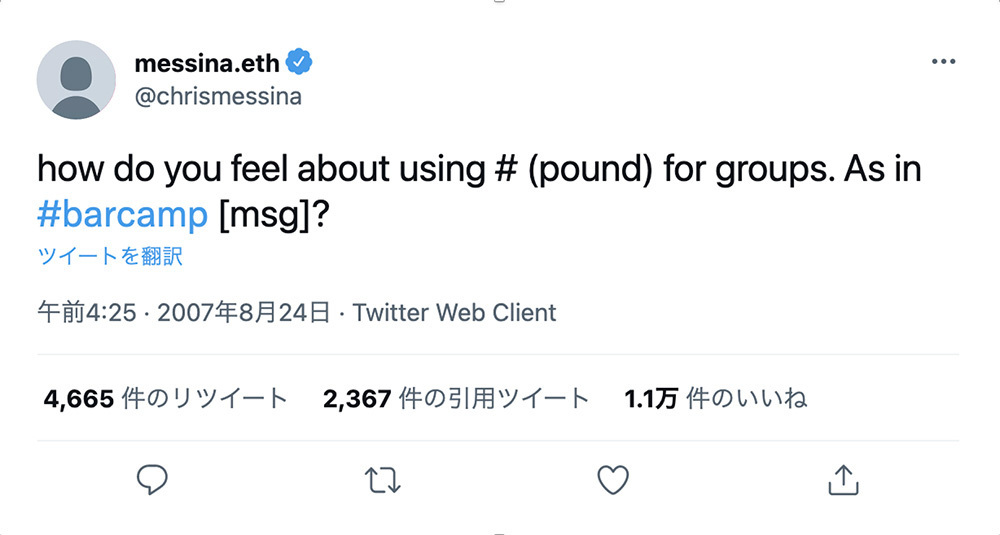
Why did he make this suggestion? Searching for "Bar Camp" would pull in unrelated posts containing both "Bar" and "Camp." Thus, hashtags were used to group and archive specific conversations, later spreading worldwide.
Over 15 years have passed since X's inception. As X became a place where hundreds of millions of users exchange words, the way hashtags are used has also evolved. The hashtag symbolizing this shift is "#MeToo".

"#MeToo" is a hashtag used since around 2017 to confess and share experiences of sexual harassment and assault.
The hand beside it represents the courage to speak up. Like this emoji, people who saw posts with "#MeToo" began confessing their own experiences with "Me too!", sparking a movement. This moment truly brought the function of "encouraging open-ended participation in new conversations" to the hashtag.
This evolution of hashtags was also seen in Japan. Compared to the early 2010s, when hashtags were often just single words, more specific hashtags emerged that clearly indicated the conversation topic even at first glance. Alongside the existing archiving function, the ability to "spark new conversations" grew stronger.
In advertising, hashtags are often treated like catchphrases, but there's a significant difference. Catchphrases are typically developed based on "What to say, How to say." In contrast, hashtags should focus on "What to talk, How to talk." They should consciously aim to stimulate conversation. The essence of hashtags lies not just in companies unilaterally sending messages to users, but in both parties standing on equal footing to energize the conversation.
There are three styles of hashtags
The hashtag combinations seen in campaign posts on X fall into the following three types:

"③ Generates conversation and serves as an archive" combines two hashtags in a post: "① Generates conversation" + "② Serves as the campaign archive name." This is used for large campaigns spanning multiple media platforms, aiming to both foster conversation and create an archival name.
For example, Morinaga Milk Industry used two hashtags—"#667Letters of Love" and "#LiptonMilkTeaWelcomeBack"—for their campaign when re-releasing "Lipton Milk Tea."
The hashtag "#667LettersOfLove" was created in reference to the 667 letters received over six months from fans requesting its relaunch after Lipton Milk Tea was discontinued. The campaign encouraged fans to post their feelings about Lipton Milk Tea on X, featuring an archive function to collect posts related to the campaign theme. "#LiptonMilkTeaWelcomeBack" is a conversation-starter hashtag.
Incidentally, when developing a hashtag like "#LiptonMilkTeaWelcomeBack," two phrasings come to mind: "#WelcomeBackLiptonMilkTea" and "#WelcomeLiptonMilkTea."
The former has a "ri" repetition that feels awkward. This leads to the latter, which uses only one "ri". However, doing so suddenly makes it feel like a planned campaign, like a message directly from the brand.
If the goal is for users to adopt it organically, "#LiptonMilkTeaWelcomeBack" feels natural and fits perfectly. While seemingly simple, this hashtag shows thoughtful consideration for the user experience.
For more on the Lipton Milk Tea relaunch campaign, we also recommend this article.
The short animated film "667 Love Letters" for Lipton Milk Tea, born from customer inquiries
There are also campaigns that combine "archiving functionality" and "conversation-generating functionality" into a single hashtag. PERSOL, a company providing staffing and job-hunting services, launched "#WhoShouldIGratekedThisTo," a prime example of this approach.
"#WhoShouldIThankForThis" is the company's branding campaign that solicited "great work deserving thanks" around Labor Thanksgiving Day. The goal is to have users post about great work using the hashtag, delivering gratitude directly to the person who performed it. It taps into the insight that "I don't know who to thank, so I want to express it to many people on X," creating motivation to speak up.
While this hashtag originates from the brand, its phrasing feels natural even when used in user posts. When testing whether a hashtag is user-friendly, don't just mentally consider "what I would post" – actually draft posts in the format you expect. If writing feels difficult, identify what's missing. Even if you can write, consider whether the content becomes repetitive. Aim to create a hashtag that attracts diverse posts.
To maximize a hashtag's conversation-generating potential, "setting motivation for users to speak up" is just as crucial as "the hashtag's clarity." Conversations won't emerge from one-sided corporate messaging. The key lies in uncovering user insights. Discovering what users wonder about daily or what they're already saying about the brand is the first step toward creating a hashtag worth talking about.
For more on uncovering user insights, we also recommend this article:
"Random Mac" Reaches 28 Million: How Young Creators Leverage X
X, where emotions explode, is a treasure trove of insights for ad planners
Key perspectives for creating hashtags
"I've found insights. I can picture the conversations it might spark. But what kind of hashtag should I use? It's so hard!" For those moments of uncertainty, here's a helpful list. Below, we've categorized over 100 campaign hashtags into 11 representative types.
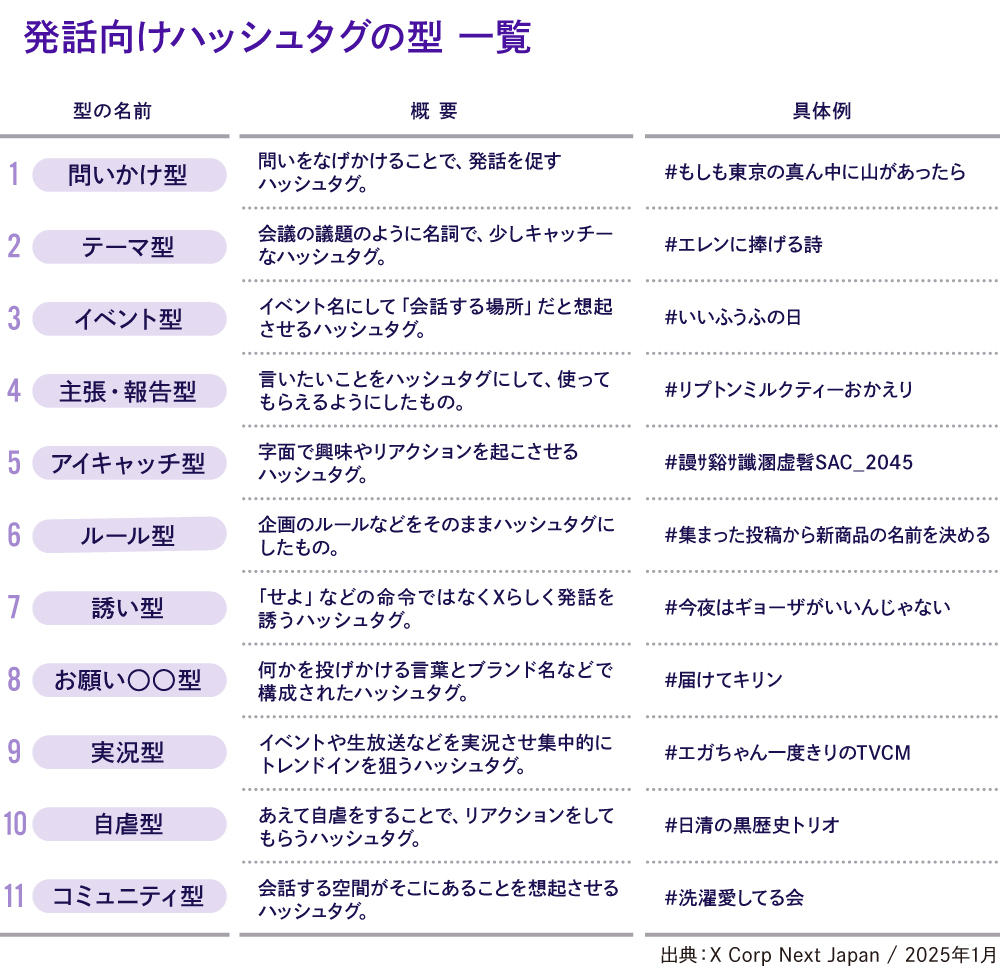
The [Question Type], like "#WhyDoYou〇〇?", which tempts you to answer. The [Event Type], like "#〇〇Election". These are classic patterns often seen on X. Beyond these, there are unique types like the [Rule Type] and [Invitation Type]. Of course, challenging yourself to go beyond these 11 types can be fun too.
Summarizing the key points from the role of hashtags to specific types:
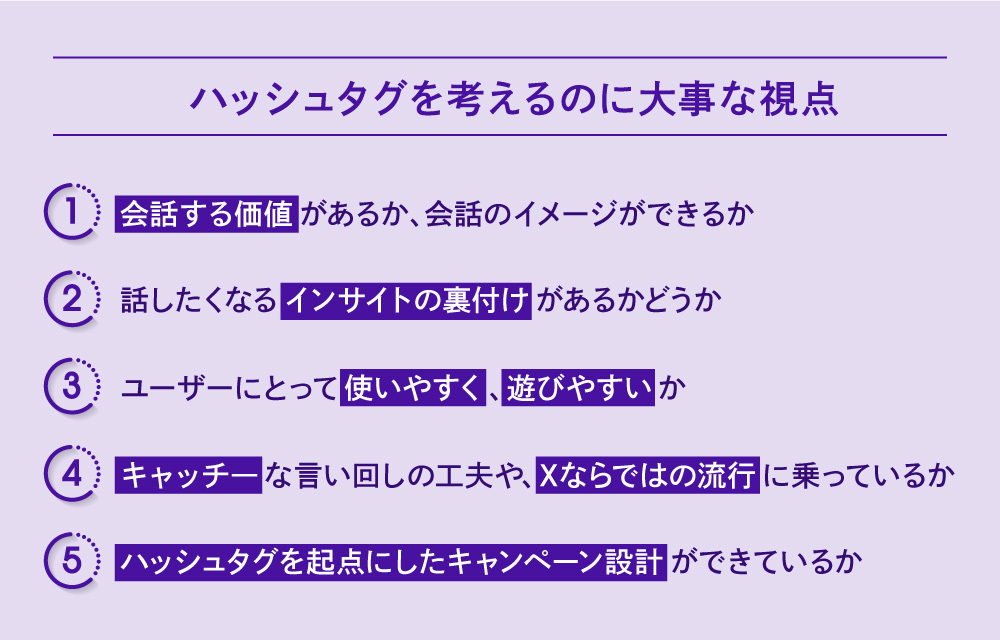
Beyond the four types introduced so far (① to ④), to further enhance hashtag effectiveness, you also need to consider "⑤ Campaign Design Centered Around Hashtags." Here are three examples of ⑤.
Campaign Design Centered Around Hashtags
・#WhoShouldIGratefulTo
This is a branding campaign by PERSOL Group (@PERSOLgroup). While X is a platform encompassing various aspects like "learning," "discussing," "debating," and "supporting," the "#WhoShouldIGratefulTo" campaign focused specifically on the aspects of "connecting" and "expressing gratitude" through the hashtag.
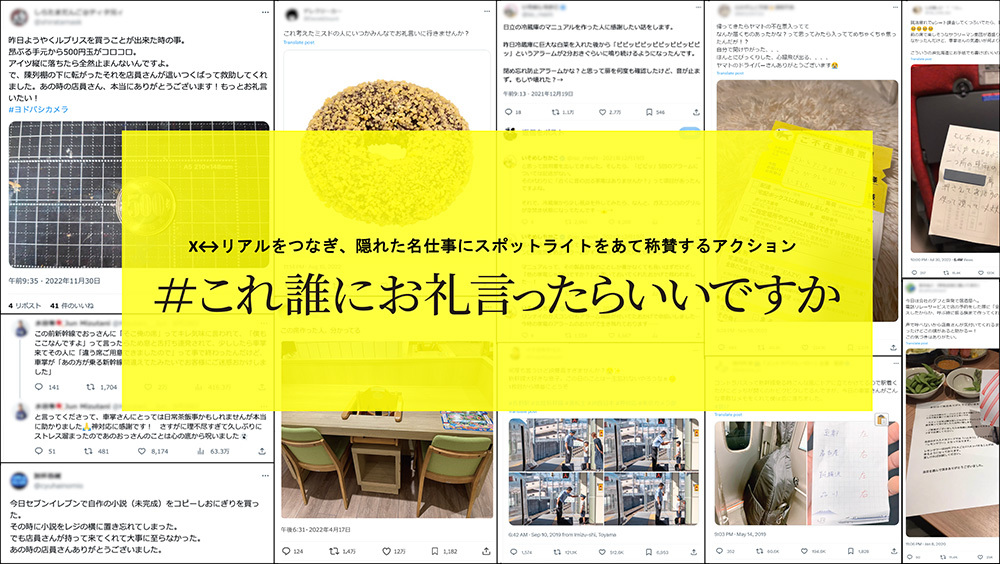
Since the Twitter era, timelines have actually been filled with many expressions of "gratitude." The campaign began by noticing posts thanking someone for their excellent work—like gratitude for outstanding service at a store or appreciation for a convenience store that developed delicious sweets.
The campaign's concept is simple: using the hashtag #WhoShouldIGratefulTo, people share gratitude they want to express but don't know who to thank. Persol then tracks down those recipients and delivers the thanks in person. It's essentially a "find-and-thank" service.
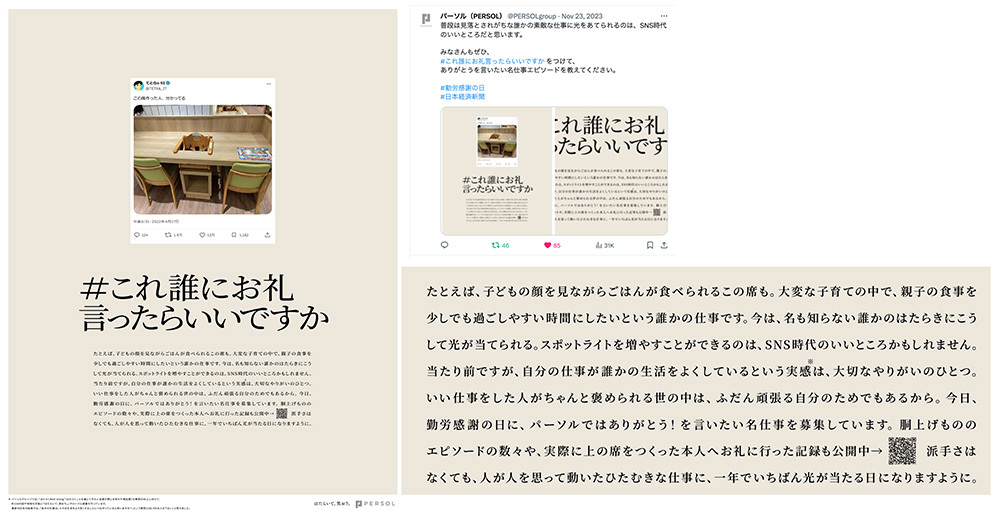
Calls for submissions ran in a 15-column newspaper ad and on X timed for Labor Thanksgiving Day. From the many expressions of gratitude for unknown individuals that poured in, several were selected. The process of tracking down these recipients through various inquiries was reportedly a painstakingly analog effort, quite unlike X's typical approach.
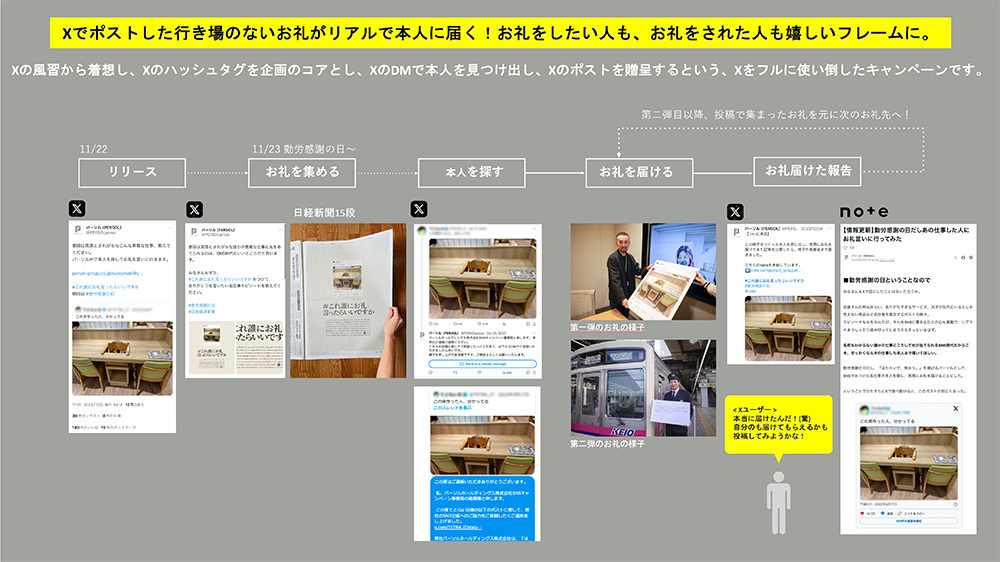
In this project, the hashtag #WhoShouldIGratefulTo served as both the core idea and the call-to-action phrase. Copywriter Yo Fukushima of Dentsu Inc. reportedly brainstormed relentlessly, like hitting 100 batting practice swings, to perfect the wording that would make it truly functional.
For a hashtag that relies on user posts, the key is "how to make people feel it's acceptable to appear on their timeline." In this case, the hashtag successfully lowered the posting barrier by effectively stimulating users' desire to express gratitude while blending naturally into X.
Combining the skill of crafting ad copy with subtle word endings and phrasing with the skill of understanding X's atmosphere significantly impacts a campaign's success or failure. This made me feel that hashtags still hold a lot of potential.
・#GirlsFolktales
The fundamental function of hashtags—gathering many voices and presenting them as one large entity—is highly effective when calling for discussion on social issues, like "#MeToo."
"#Girls' Old Tales" was a Twitter campaign (at the time of implementation) by the international NGO Plan International, aimed at raising awareness about gender gaps in Japan.
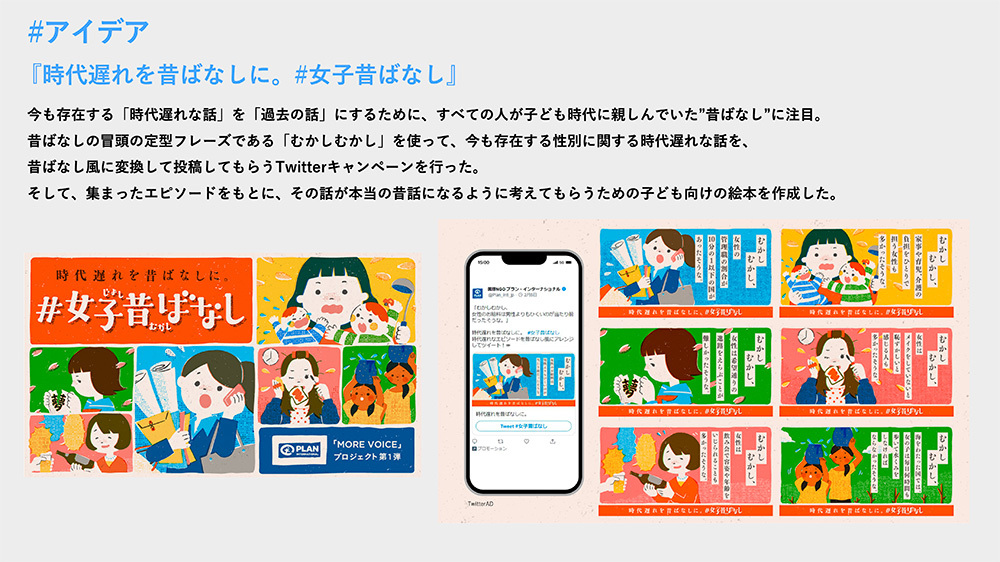
For more on "Girls' Tales," we also recommend this article.
Creative approaches tackling social issues. "#Girls' Old Tales" confronting gender issues head-on
What was once commonplace is now unacceptable. As the world continuously updates, outdated customs are naturally phased out. This campaign aims to view this perspective from a slightly distant future, transforming the outdated episodes of gender discrimination that still exist today into stories of the past.
Therefore, using the thematic hashtag "#GirlsOldTales," we solicited stories beginning with the classic folktale opening "Once upon a time..." The result? Over 3,000 episodes were collected.
This overwhelming response was made possible by the clever use of the hashtag. By framing sensitive issues within the "#GirlsOldTales" format, it created a space where women could share experiences they might otherwise hesitate to voice directly.
To further utilize the collected voices, this initiative produced a picture book. This book was then used as educational material in school lessons and for read-aloud sessions. To broaden and deepen awareness of the digital campaign, integrating it with offline elements proved effective. This included using the same hashtag in mass media and utilizing actual posts as Out-of-Home (OOH) advertising.

The high affinity between folktales and picture books makes "#GirlsFolktales" a particularly noteworthy hashtag for its potential for expansion through real-world integration.
In recent years, as many companies have begun considering their social purpose through purpose branding and developing a mindset of contributing to society through their products and services, the social power of hashtags presents significant opportunities for utilization.
・#FindMeSENKA
A prime example of leveraging hashtags to amplify campaign impact by blending the digital space of X with the real world is the launch campaign for the collaborative packaging between Fine Today's facial cleanser SENKA and LINE FRIENDS' globally popular character brand BT21. The campaign kicked off with this post.
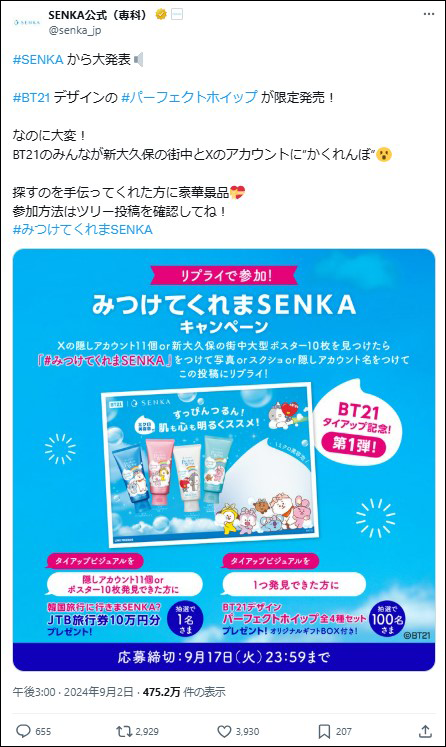
Prior to this post, the main visual poster for this collaboration was displayed at 10 locations in Shin-Okubo. Additionally, posts were made from 11 hidden accounts launched within X. The challenge posed to users was to find these accounts.
Fans immediately took action on this challenge. Simultaneously, they began searching for the target accounts among the countless accounts on X and hunting for the real-world posters outside the digital world of X.
As expected, these passionate fans enthusiastically enjoyed the challenge. They discovered hidden posters and accounts one after another, posting extensively with the hashtag #みつけてくれまSENKA.
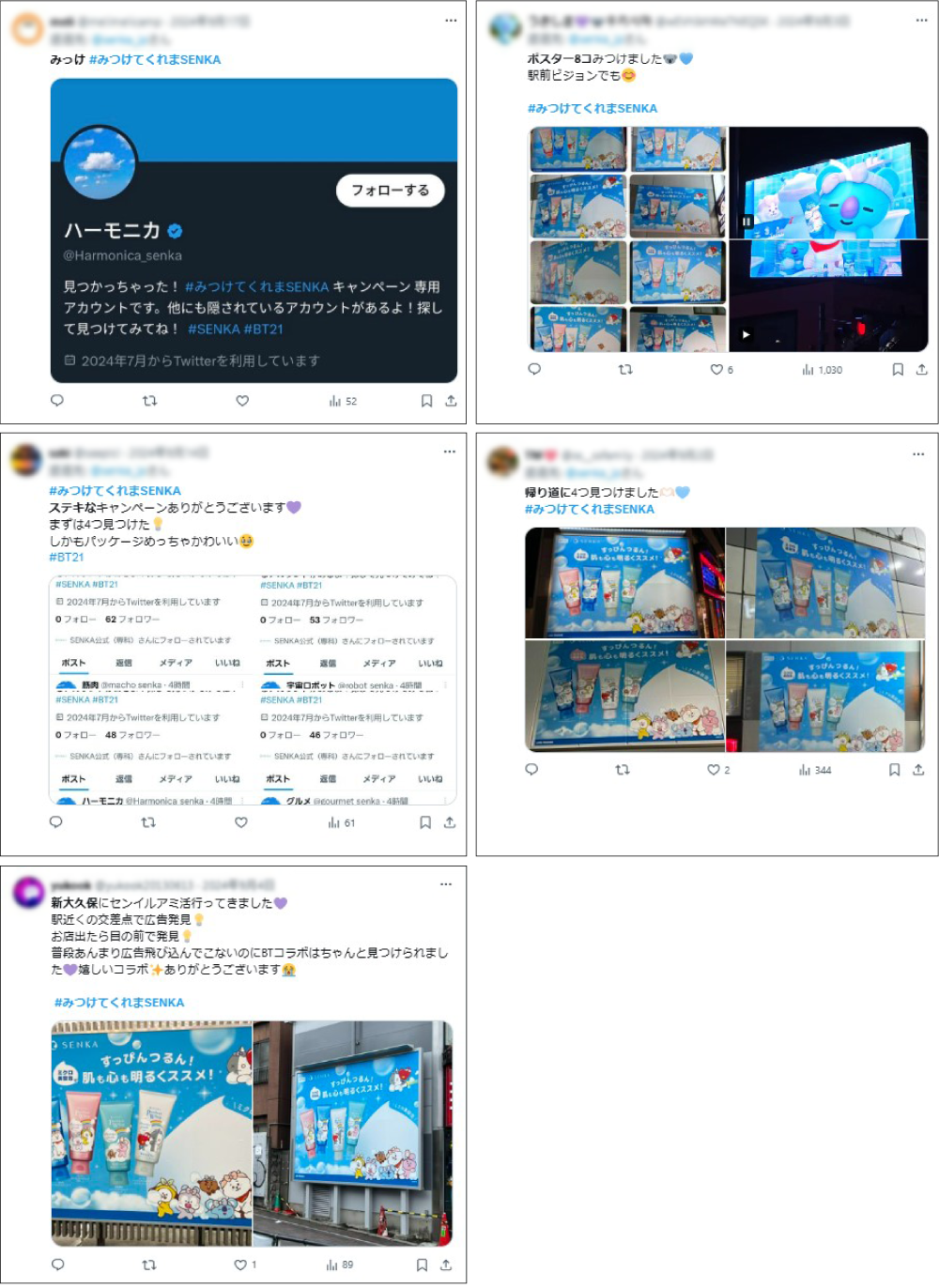
On the other hand, a crucial consideration for campaigns on X is that the faster the excitement builds, the quicker it tends to fade. Time moves fast in the digital world, especially on X; last week's trends rarely survive into the next. This post was our strategy to sustain that excitement as long as possible.

In fact, we had secretly embedded one mistake in each of the 10 poster locations in Shin-Okubo and all 11 hidden account images beforehand. These mistakes ranged from easily noticeable at a glance to ones requiring careful attention. By doing this, we gave the main hashtag, "#FindUsSENKA," an additional layer of meaning. We created a mechanism allowing participants to enjoy the campaign again, successfully sustaining its momentum.
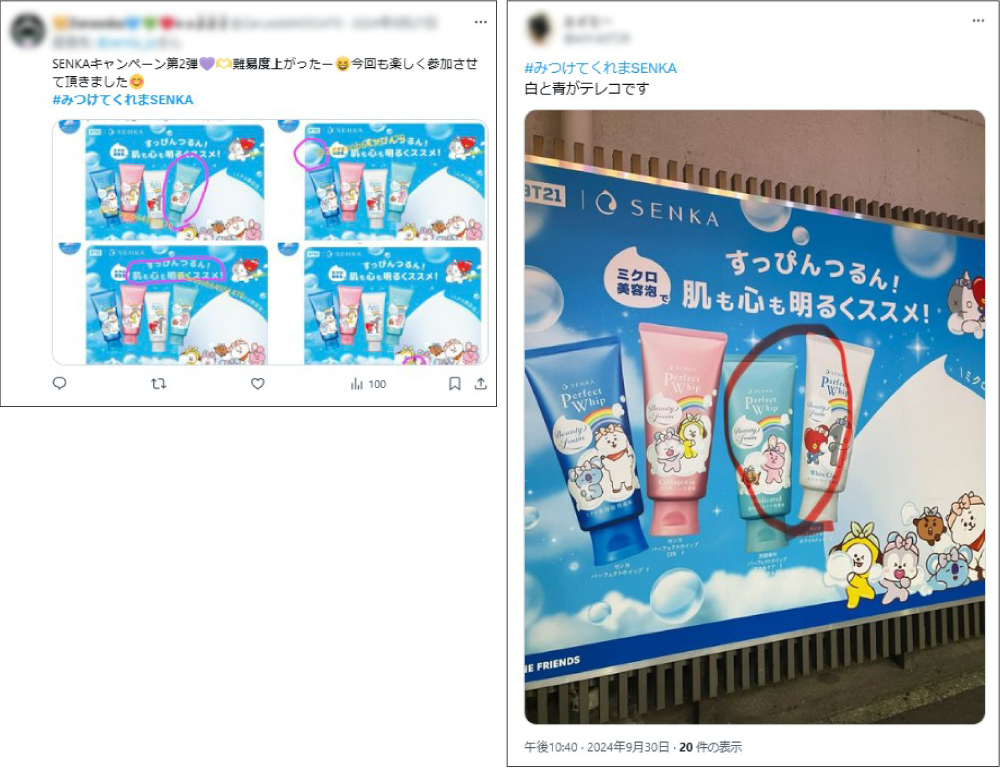
The role of the hashtag in this project differed from any previous type; it served as proof of achievement, much like a stamp in a stamp rally. For users who hadn't found them yet, it also provided hints for the search.
As a result, this campaign successfully encouraged the actual act of "finding" through both real and digital means. This led to longer and deeper brand engagement, such as prompting people to visit Shin-Okubo and explore within X.
Furthermore, by staggering the timing,
・Find the poster/account #みつけてくれまSENKA
・"Find the mistake" #みつけてくれまSENKA
By giving one hashtag two distinct meanings, the campaign successfully sustained momentum over a longer period, making it an exceptionally well-executed initiative.
This article introduced the value of hashtags in advertising campaigns and examples of their effective use. While hashtags fundamentally serve as tools to gather voices and make them visible as a collective, their usage still holds vast untapped potential. We hope the hashtag formats and examples presented here will be useful for developing new hashtags and campaigns.
Was this article helpful?
Newsletter registration is here
We select and publish important news every day
For inquiries about this article
Back Numbers
Author

Wataru Miyahara
X Corp. Japan Co., Ltd.
Next Team
Creative Strategist
As a copywriter who moves between words and planning, I worked at a foreign-affiliated advertising agency before joining the word platform "Twitter" in 2021. I enjoy experimenting by blending insights gained from moving freely across various fields—beyond advertising, including program content, XR, and the metaverse. Awarded at The One Show, Clio Awards, The Webby Awards, and others.

Nakagawa Kenta
Dentsu Inc.
4th CR Planning Bureau
Creative Director/Communication Planner
After one year at a magazine publisher, I worked as a copywriter and commercial planner at my current agency. I specialize in integrated communications that seamlessly connect mass, digital, and promotional channels. Competed in the 9th TV Champion Ramen King Championship. Participated in the Tokyo Marathon seven times. Personal best: 3 hours 29 minutes.
